Swan Identification
Our programs and initiatives are dedicated to the preservation and protection of the Trumpeter and Tundra swans. Use this page to get more information on where to watch the swans, identifying them, and other helpful resources.
Many websites contain information on swan identification. Rather than rework that information here, we recommend that you visit the sites listed below to learn more about swan ID, including their calls, as well as species that may look similar such as snow geese and white pelicans.
When you finish with your experience there please come back to nwswans.org and try your skills with the swan ID photo gallery. The gallery is set up for you to practice honing your skills on identifying both Tundra and Trumpeter Swans and especially in distinguishing between the two species where they occur together.
The answers are provided at the end in Answers.
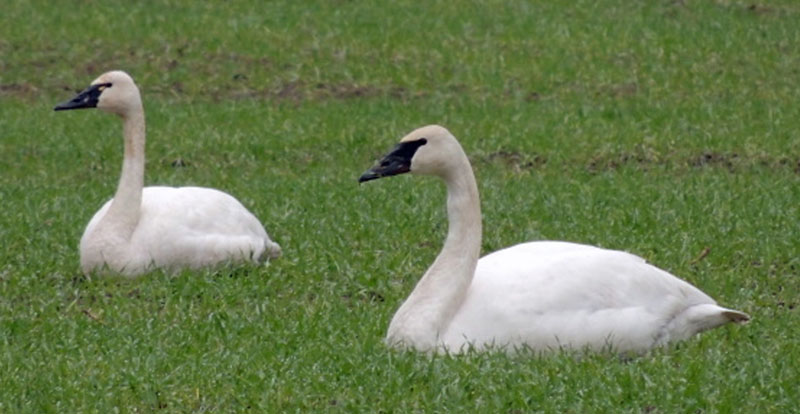
Add Your Heading Text Here
Photo 1: Two swans, who is who?
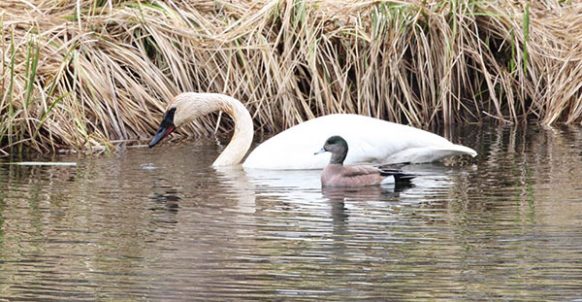
Add Your Heading Text Here
Photo 2: Who do we have here?
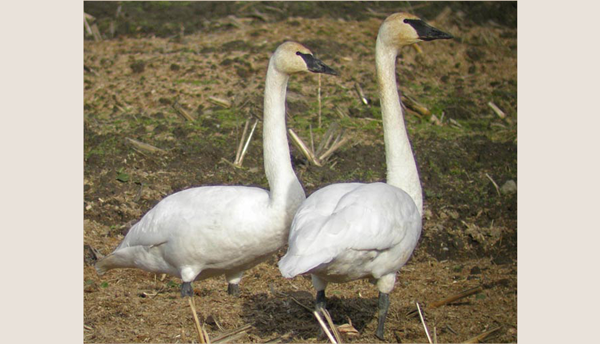
Add Your Heading Text Here
Photo 3: Which swans are these?
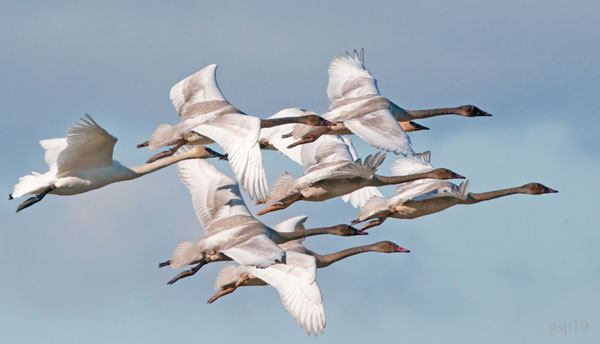
Add Your Heading Text Here
Photo 4. This mid-November family is just coming into the wintering area. Are they Trumpeter or Tundra swans?
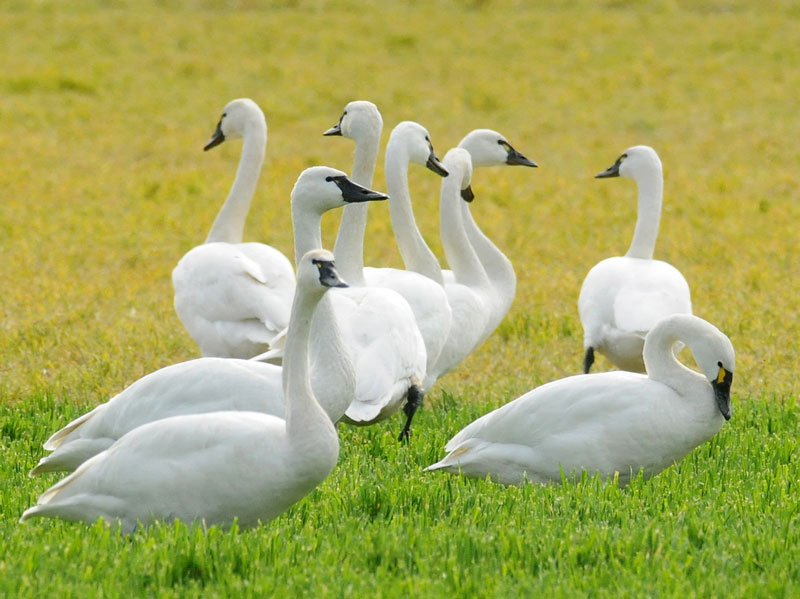
Add Your Heading Text Here
Photo 5. Which swans are enjoying the winter wheat grass?
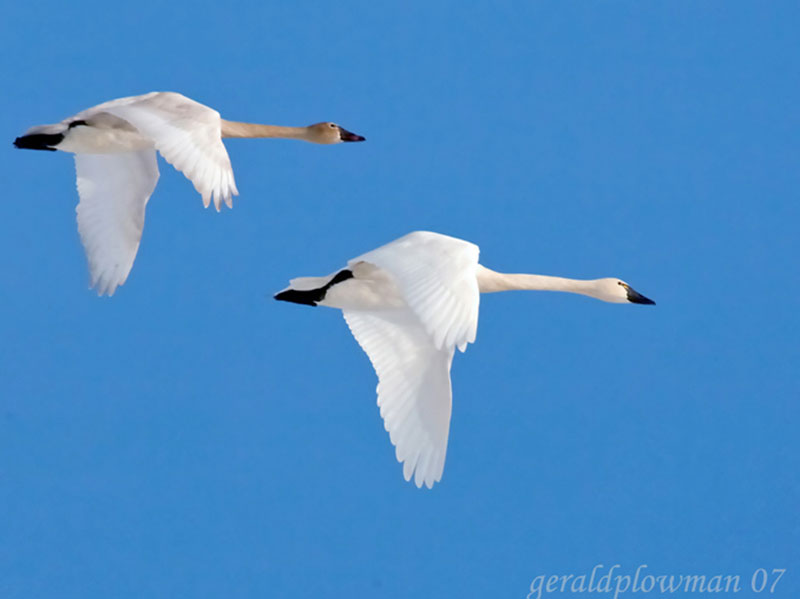
Add Your Heading Text Here
Photo 6. Flying swans are more of a challenge to ID. These have all the clues you need. And what age are they?
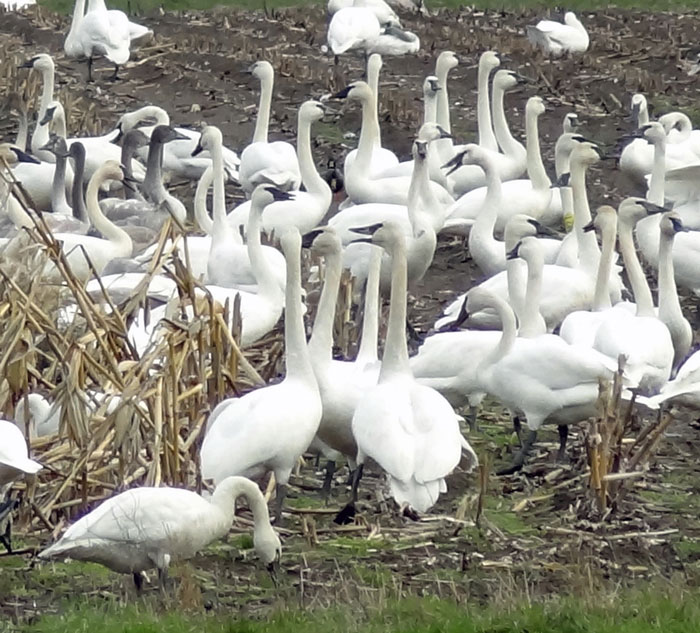
Add Your Heading Text Here
Photo 7. Typical scene in the Skagit Valley corn fields in January. Can you spot the odd swan out and what else?
Answers
Click to reveal the answers:
Photo 1. Tundra Swan on left, Trumpeter Swan on right
Photo 2. Trumpeter Swan and American wigeon. Note head and bill shape of swan.
Photo 3. A pair of Trumpeter swans. Female on left, male on right. This is shows how the sexes can sometimes substantially vary in size. A male and a small female paired together.
Photo 4. A family of Trumpeter Swans. Note the darker plumage, especially on the head and neck, of the juveniles and the color of their legs/feet. The legs/feet are heavily mottled at this age. The head shape is another key to ID.
Photo 5. Note the wide variation in head shape and the yellow spot on the lores. This is common in Tundra swans.
Photo 6. Tundra Swans- juvenile on left, adult on right. Note the head shape of both swans and the color of the juvenile. The juvenile is lighter gray and has black legs/feet. There is a yellow spot on the lore of the adult. Both have the eye distinct from the bill.
Photo 7. Red star is Tundra swan. Others are Trumpeters. The red arrow points to a neck band on a Trumpeter Swan. If you had a scope, it would read M21, reading from body to head on the collar.
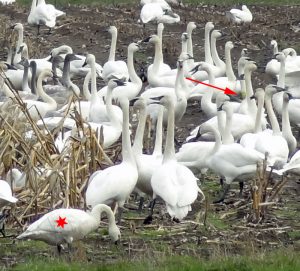
An online test for those who want additional skill building experience:
The Utah Division of Wildlife Resources has an online Swan Hunter Orientation Course. While this test is designed to assist hunters in identifying swans in Utah, much of the information is useful for other areas of the country and birders.
Try it out, you do not have to give any personal information, just skip over the login and other stuff and go directly to the test. You do have to set up a sign in. They will not share your information or send you anything. It is a good test for skill building.
Support Swans - Donate
By supporting NWSCA you are helping us to protect and advocate for swans and their habitats. Help keep Trumpeter and Tundra swans gracing our skies and wetlands.
